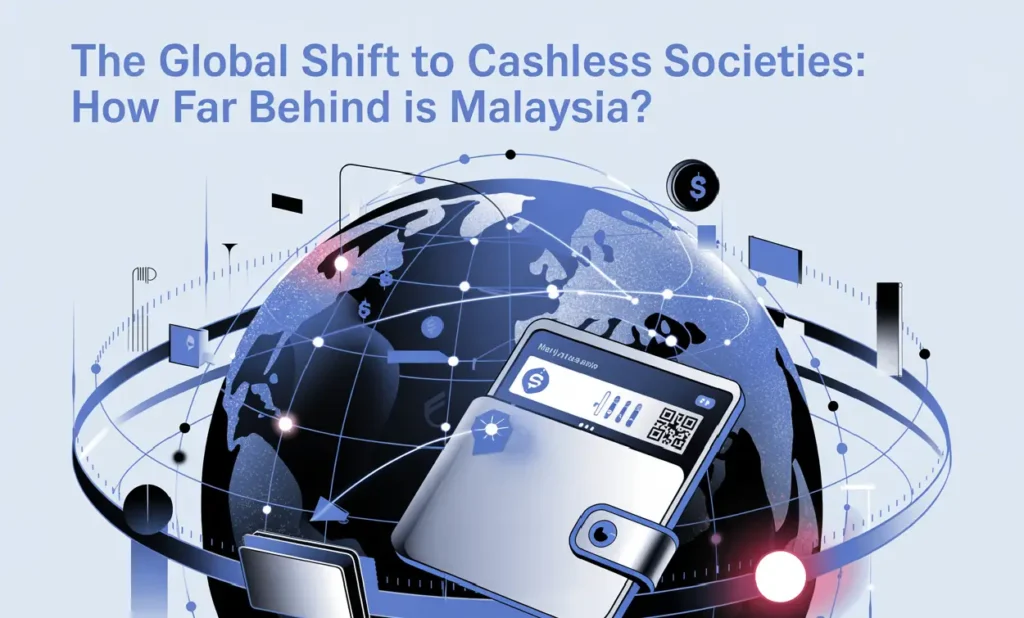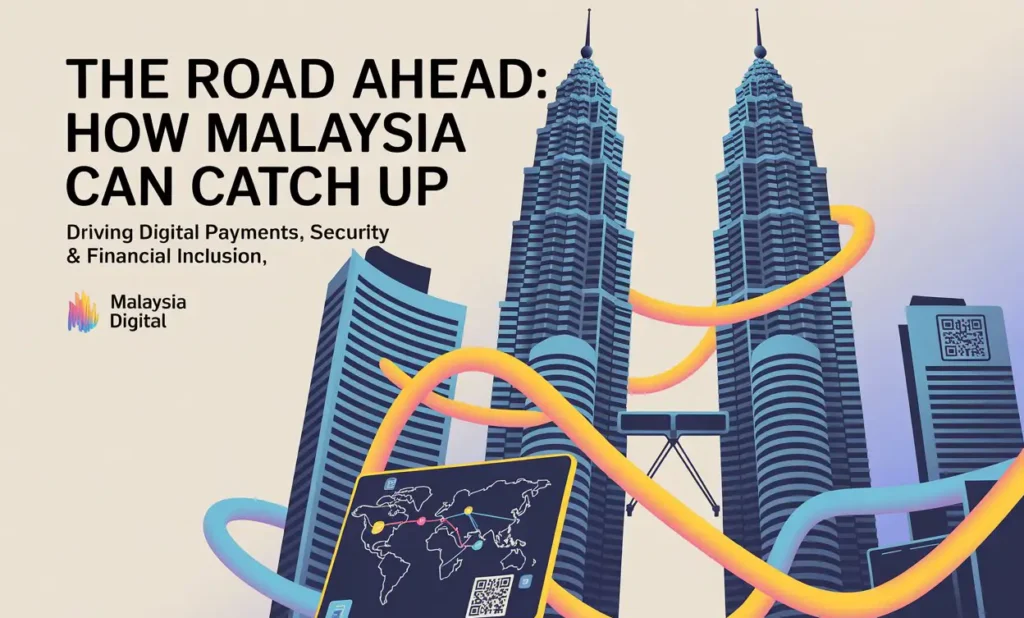
As nations across the globe accelerate their adoption of digital payment ecosystems, Malaysia’s journey toward becoming a fully cashless society is being scrutinized. While countries like Sweden, China, and South Korea are already living examples of highly digitized economies, Malaysia is still navigating the complex path toward digital financial transformation. The question persists—how far behind is Malaysia in this global shift, and what needs to be done to close the gap?
The Rise of Cashless Economies Worldwide

The global momentum toward cashless transactions is undeniable. In countries like Sweden, over 95% of retail transactions are now done digitally. China’s digital payment giants, Alipay and WeChat Pay, have redefined commerce and daily life. Even India’s UPI system has gained massive traction, facilitating billions of transactions monthly.
These nations have benefited from:
- Robust digital infrastructure
- Widespread internet penetration
- Government incentives and policy support
- Private sector innovation
As a result, cash has become almost obsolete in these economies, replaced by mobile wallets, contactless cards, and QR code payments.
Malaysia’s Digital Payment Landscape: An Overview

Malaysia is not entirely behind in the digital race. The country boasts a 95% internet penetration rate, and over 88% smartphone usage among adults. Government initiatives like eTunai Rakyat, DuitNow, and the Financial Sector Blueprint 2022–2026 signal a strong commitment to the digital economy.
However, despite these strides, cash remains king in many sectors, particularly in rural and semi-urban areas. A 2023 Bank Negara Malaysia (BNM) report highlighted that 60% of transactions in traditional retail still rely on cash.
Barriers to a Fully Cashless Malaysia
While Malaysia’s infrastructure is relatively developed, the transition faces several systemic, cultural, and economic barriers:
1. Rural and B40 Community Exclusion
Large segments of the population, especially in rural areas and among the B40 (Bottom 40%) income group, remain unbanked or underbanked. Issues include:
- Limited access to reliable internet
- Low digital literacy
- Distrust in digital platforms
- Lack of smartphones or digital devices
2. SME and Microenterprise Resistance
Small and micro-businesses form the backbone of Malaysia’s economy. However, many:
- Still prefer cash for its immediacy
- Struggle with transaction fees on digital payments
- Lack incentives or training to digitize their payment systems
3. Cybersecurity Concerns
The Malaysian public expresses consistent concerns about:
- Digital fraud and phishing scams
- Data privacy issues
- Lack of confidence in financial platforms
Although Bank Negara has introduced several regulatory frameworks to enhance cybersecurity, awareness and trust-building are still ongoing challenges.
Government and Industry Efforts to Accelerate Cashless Adoption

To close the gap, Malaysia has undertaken several progressive steps, including:
DuitNow and QR Code Standardization
Launched by PayNet and Bank Negara, DuitNow QR allows interoperable QR code payments across banks and e-wallet providers. This drastically reduces merchant friction and consumer confusion, encouraging widespread adoption.
Financial Sector Blueprint 2022–2026
This roadmap emphasizes:
- Inclusive financial access
- Digitization of financial services
- Open banking frameworks
- Strengthened digital identity systems
Incentives for Merchants and Consumers
Through initiatives like Ebelia Rahmah and cashback programs, the government aims to:
- Encourage youth to use e-wallets
- Provide subsidies for SMEs to adopt digital systems
- Reduce dependency on physical cash handling
Private Sector Disruption and Innovation
Private companies have also played a vital role in driving Malaysia’s cashless momentum:
Boost, Touch ‘n Go eWallet, and GrabPay
These platforms have expanded from basic payment functions to offering microloans, insurance, and investment products, creating a comprehensive digital financial ecosystem.
BNPL and Fintech Lending
“Buy Now, Pay Later” services have surged, offering new credit avenues for consumers without traditional credit cards. Platforms like Atome and Pace are gaining traction, particularly among younger demographics.
Comparative Analysis: Where Malaysia Stands
When stacked against global cashless leaders:
| Country | Cashless Penetration | Key Driver | Year Target for Full Cashless |
| Sweden | >95% | Policy, infrastructure | 2025 |
| China | >90% | Super apps, QR payment | Already achieved in cities |
| South Korea | >90% | Mobile payments, loyalty | 2026 |
| India | ~80% | UPI, demonetization | 2030 |
| Malaysia | ~55-60% | Mixed adoption | 2030 (tentative) |
While Malaysia shows promise, the disparity between urban and rural digital behavior remains a considerable hurdle.
The Road Ahead: How Malaysia Can Catch Up

To truly become a cashless leader in Southeast Asia, Malaysia must:
1. Invest in Digital Infrastructure
Expanding high-speed internet to rural areas is crucial. Government collaboration with telcos and fintech’s can bridge this divide.
2. Enforce Mandatory Digital Options
Introduce policies requiring all merchants to offer at least one cashless payment method. This will normalize digital transactions even in traditional sectors.
3. Strengthen Cybersecurity Frameworks
Invest in:
- Real-time fraud monitoring
- Two-factor authentication
- Public cybersecurity awareness campaigns
4. Financial Literacy Campaigns
Nationwide programs focusing on:
- Digital banking education
- wallet onboarding
- Safe online financial practices
This will empower more citizens to confidently adopt digital payments.
5. Cross-Border Payment Integration
By aligning with ASEAN Payment Connectivity, Malaysia can facilitate:
- Frictionless cross-border transactions
- Increased regional commerce
- Boosted tourism spending through e-wallet interoperability
Malaysia’s Cashless Future Is Within Reach
Malaysia is not fundamentally behind but rather at a pivotal juncture. The country has the infrastructure, political will, and innovative private sector needed to become a regional leader in digital finance. However, targeted policies, inclusive growth strategies, and sustained public-private collaboration are essential to achieving this vision. With strategic execution, Malaysia can not only catch up but leap forward in the global race toward a fully cashless society.


